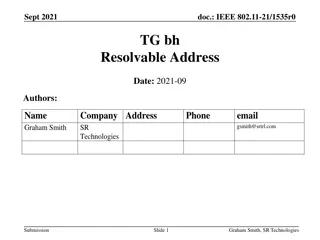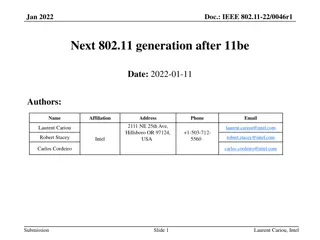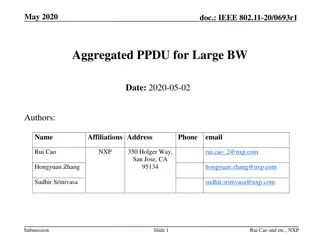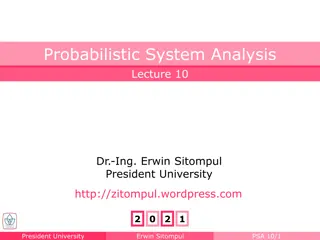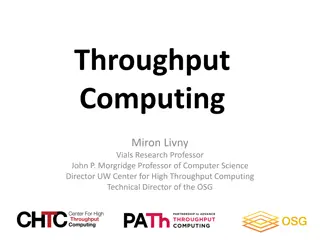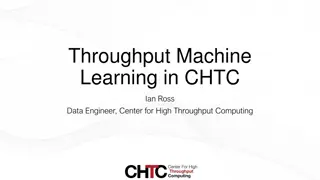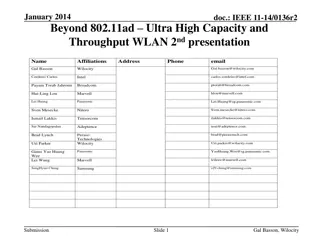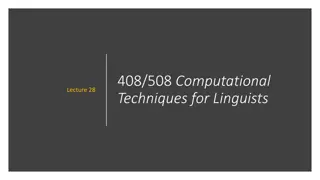High-Throughput True Random Number Generation Using QUAC-TRNG
DRAM-based QUAC-TRNG provides high-throughput and low-latency true random number generation by utilizing commodity DRAM devices. By employing Quadruple Row Activation (QUAC), this method outperforms existing TRNGs, achieving a 15.08x improvement in throughput and passing all 15 NIST randomness tests. The innovative approach of activating conflicting data-initialized DRAM rows allows for the generation of random values efficiently. This advancement is crucial for various applications requiring high-quality true random numbers.
Download Presentation

Please find below an Image/Link to download the presentation.
The content on the website is provided AS IS for your information and personal use only. It may not be sold, licensed, or shared on other websites without obtaining consent from the author.If you encounter any issues during the download, it is possible that the publisher has removed the file from their server.
You are allowed to download the files provided on this website for personal or commercial use, subject to the condition that they are used lawfully. All files are the property of their respective owners.
The content on the website is provided AS IS for your information and personal use only. It may not be sold, licensed, or shared on other websites without obtaining consent from the author.
E N D
Presentation Transcript
QUAC-TRNG High-Throughput True Random Number Generation Using Quadruple Row Activation in Real DRAM Chips Ataberk Olgun Minesh Patel A. Giray Yag l kc Haocong Luo Jeremie S. Kim F. Nisa Bostanc Nandita Vijaykumar Og uz Ergin Onur Mutlu
Executive Summary Motivation: DRAM-based true random number generators (TRNGs) provide true random numbers at low cost on awide range of computing systems Problem: Prior DRAM-based TRNGs are slow: 1. Based on fundamentally slow processes highlatency 2. Cannot effectively harness entropy from DRAM rows low throughput Goal: Develop a high-throughput and low-latency TRNG that uses commodity DRAM devices Key Observation: Carefully engineered sequence of DRAM commands can activate four DRAM rows QUadruple ACtivation (QUAC) Key Idea: UseQUAC to activate DRAM rows that are initialized with conflicting data (e.g., two 1 s and two 0 s) to generate random values QUAC-TRNG: DRAM-based TRNG that generates true random numbers at high- throughput and low-latency by repeatedly performing QUAC operations Results: We evaluate QUAC-TRNG using 136 real DDR4 chips 1. 5.4 Gb/s maximum (3.4 Gb/s average) TRNG throughput per DRAM channel 2. Outperforms existing DRAM-based TRNGs by 15.08x (base), and 1.41x (enhanced) 3. QUAC-TRNG has low TRNG latency: 256-bit RN in 274 ns 4. QUAC-TRNG passes all 15 NIST randomness tests 2
Use Cases of True Random Numbers High-quality true random numbers are critical to many applications True random numbers can onlybe obtained by sampling random physical processes Not all computing systems are equipped with TRNG hardware (e.g., dedicated circuitry) 3
DRAM-Based TRNGs DRAM is ubiquitous in modern computing platforms DRAM-based TRNGs enable low-costand high-throughput true random number generation within DRAM Requires no specialized hardware: Benefits constrained systems Open application space: Provides high-throughput TRNG [Samsung] Processing-in-Memory (PIM) systems perform computation directly within memory Avoid inefficient off-chip data movement DRAM-based TRNGs Enable PIM workloads to sample true random numbers directly within the memory chip Avoid communication to possible off-chip TRNG sources [UPMEM] 4
Motivation and Goal Prior DRAM-based TRNGs are slow, these TRNGs: 1. Are based on fundamentally slow physical processes - DRAM retention-based TRNGs - DRAM startup value-based TRNGs 2. Cannot effectively harness entropy from DRAM rows - DRAM timing failure-based TRNGs Goal: Develop a high-throughput and low-latency TRNG that can be implemented using commodity DRAM devices Key Observation QUadruple ACtivation (QUAC): Carefully-engineered DRAM commands can activate four DRAM rows in real chips 5
Using QUAC to Generate Random Values Use QUAC to activate DRAM rows that are initialized with conflicting data (e.g., two 1 s and two 0 s) to generate random values Row 3 Row 2 Wordline Row 1 Bitline Capacitor Row 0 Sense Amplifiers Random Values ACT PRE Violate Timing ACT Violate Timing 6
QUAC-TRNG Sense Amplifiers One-time Characterization Find Shannon Entropy of Each Sense Amplifier 0000000000 0 Entropy 1101001001 1 Entropy Sum of each bitline s entropy = 256 bits Initialize Rows 1 Perform QUAC 2 Memory Controller SHA-256 Read Block 3 256-bit Post- process 4 True Random Number 7
Experimental Methodology Experimentally study QUAC and QUAC-TRNG using 136 real DDR4 chips Spatial distribution of entropy Data pattern dependency of entropy DDR4 SoftMC DRAM Testing Infrastructure [Hassan+ HPCA 17] 8 https://github.com/CMU-SAFARI/SoftMC
Key Results 5.4 Gb/s TRNG throughput (3.44 Gb/s on average) per channel Outperform state-of-the-art base by 15.08x and enhanced by 1.41x Low latency: Generates a 256-bit random number in 274 ns Passes all 15 standard NIST randomness tests Negligible area cost: 0.04% of a contemporary CPU Negligible memory overhead: 0.002% of an 8 GiB DRAM module Entropy changes with temperature Entropy remains stable for at least up to a month 9
QUAC-TRNG High-Throughput True Random Number Generation Using Quadruple Row Activation in Real DRAM Chips Ataberk Olgun Minesh Patel A. Giray Yag l kc Haocong Luo Jeremie S. Kim F. Nisa Bostanc Nandita Vijaykumar Og uz Ergin Onur Mutlu



